Spurgeon's Orphan Homes, London / Surrey / Kent
Charles Haddon Spurgeon (1834-92) was a charismatic preacher and a leading member of a denomination known as the Strict Baptists. In 1854, he became pastor at the New Park Street Chapel in Southwark, south London. In 1861, the rapidly growing size of his congregation resulted in its relocating to the new Metropolitan Tabernacle at Elephant and Castle, Southwark, were 5,000 could be seated.
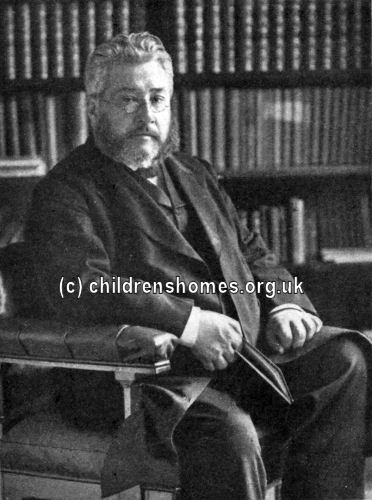
Charles Haddon Spurgeon. © Peter Higginbotham
In 1867, inspired by the work of George Muller in Bristol, Spurgeon established an Orphan Home for Boys at Stockwell, in south-west London. Its founding was made possible by the promise, in 1866, of a £20,000 donation from Mrs Hillyard, the widow of one of the Brethren of Spurgeon's church. A two-and-a-half acre site was purchased near to the Clapham Road but the start of building work was delayed when a panic in the financial market held up the arrival of the funds from Mrs Hillyard. This turned out to have an unexpected benefit, as the money for the building was readily raised from other enthusiastic contributors, while Mrs Haddon's eventual donation was to provide a considerable endowment for the running of the Home.
The scheme of the Orphanage, in Spurgeon's words, "proposed to do away with all voting and canvassing, with the wasteful expenditure necessitated thereby, and also to form the orphans into large families instead of massing them together on the workhouse system." This latter idea proved very helpful in the raising of funds, with many donors each giving a sum sufficient to build one house, while the smaller gifts of less wealthy sympathisers provided the means to build the dining-hall and other common rooms. By Mr. George Moore, of Bow Churchyard, was the first large contributor with £250; then Mrs. Tyson, a lady who afterwards in her will left £25,000 to the Orphanage, initially gave £500 to build a house. As this was a silver-wedding gift from her husband it was decided that the house should be called "Silver-wedding House". A merchant next provided £600 for a "Merchant's House", and Mr. William Higgs and his workmen promised to build a "Workmen's House", while Mr. Thomas Olney and his sons agreed to provide "Unity House" in memory of Mrs Unity Olney. The first stones of these houses were laid on September 9th, 1867, by Charles Spurgeon, Mrs Hillyard, Mr W Higgs, and Mr Thomas Olney respectively. In June, 1868, the Baptist Churches of the United Kingdom presented £1,200 (later increased to £1,765) as a testimonial to Spurgeon for the erection of two "Testimonial Houses". A "Sunday School House" was given by the Tabernacle Sunday School, and a "Student's House" by the ministers trained at the Pastors' College which Spurgeon had founded in 1857. By the end of 1869, all the buildings had been completed, and their cost, amounting to £10,200, paid in full.
The Stockwell Orphanage site is shown on the 1896 map below.

Spurgeon's Orphan Homes site, Stockwell, c.1896.
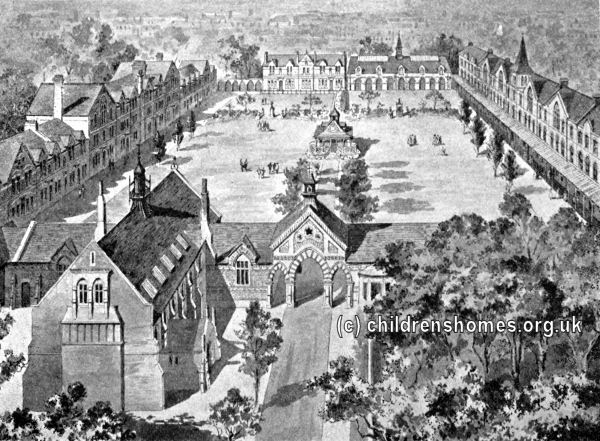
Spurgeon's Orphan Homes, Stockwell, from the north-west. © Peter Higginbotham
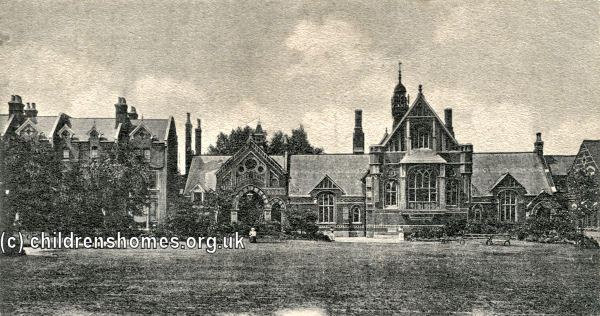
Spurgeon's Orphan Homes entrance and chapel from the south-east. © Peter Higginbotham
Even before the building was finished, orphans were being collected together in readiness for its opening. In July, 1867, a Christian woman was engaged to accommodate the first six boys in her own house until the Orphanage was ready, with the cost of their maintenance provided by Mrs Hillyard, who sold her silver plate in order to make a further gift to the work.
The Home's first and long-standing headmaster was the Rev. Vernon J Charlesworth, formerly an Assistant Minister at Surrey Chapel, who had worked for a number of years with homeless children .
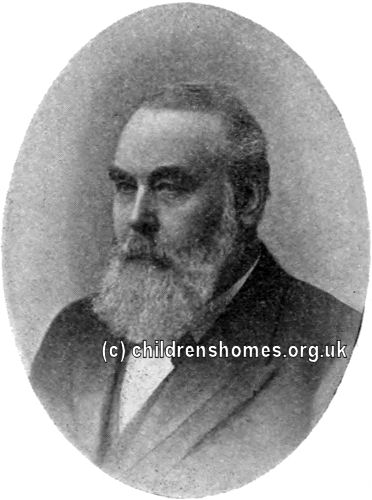
Rev. Vernon J Charlesworth. © Peter Higginbotham
Each house or villa at the orphanage was run along the lines of a family home, with a Christian "mother" or matron at its head. Family prayers were conducted each morning before the duties of the day began. For the sake of economy, however, meals were taken in the institution's communal dining-hall. It was a deliberate policy that the inmates of the home should not wear a distinctive uniform that would identify them as charity children. Instead, they wore ordinary clothing, all slightly different from one another. The boys were given a good English education which aimed to fit then for positions in the world of commerce, although manual skills such as carpentry also featured in the curriculum. In religious matters, the home was Christian but non-sectarian and the denominations represented among the children included: Church of England, Baptist, Congregational, Wesleyan, Presbyterian, Brethren, Roman Catholic, Moravian, Bible Christian, Society of Friends, and Salvation Army.
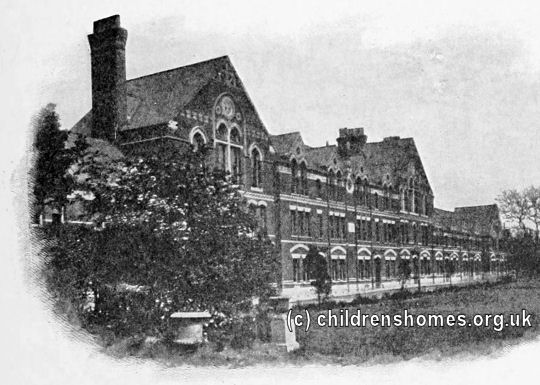
Spurgeon's Orphan Homes boys' section. © Peter Higginbotham
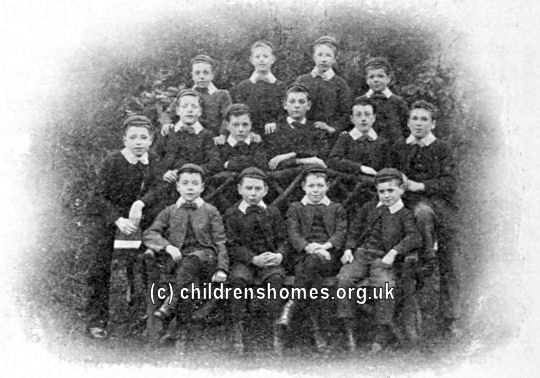
Boys at Spurgeon's Orphan Homes, Stockwell. © Peter Higginbotham
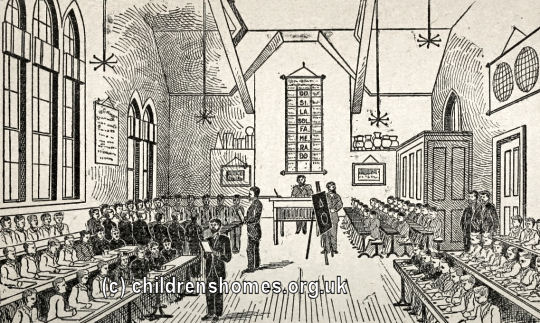
Classroom at Spurgeon's Orphan Homes, Stockwell. © Peter Higginbotham

Boys show off their carpentry work at Spurgeon's Orphan Homes, Stockwell. © Peter Higginbotham
A girls' section was added to the orphanage in 1879, initiated by a gift of £50 from Mrs Hillyard, to which Spurgeon added another £50 from the testimonial presented to him on the occasion of the celebration of his pastoral silver jubilee, and a third £50 given by Mr TD Galpin. A large house with grounds at 193 Clapham Road, adjoining the existing Orphanage, was acquired for £4,000, although lack of funds was about to cause the purchase to fall through when a legacy of £1,500 arrived at the last moment. By 1882, the entire institution covered more than four acres and provided accommodation for 250 boys and 250 girls. The girls' homes were run along similar lines to the boys', the most notable difference being that the girls dined in their various houses rather than in a communal hall. The girls, as was usually the case in such homes, received training in domestic skills.
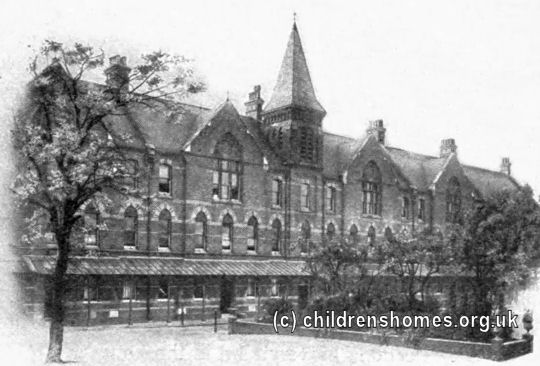
Spurgeon's Orphan Homes girls' section. © Peter Higginbotham
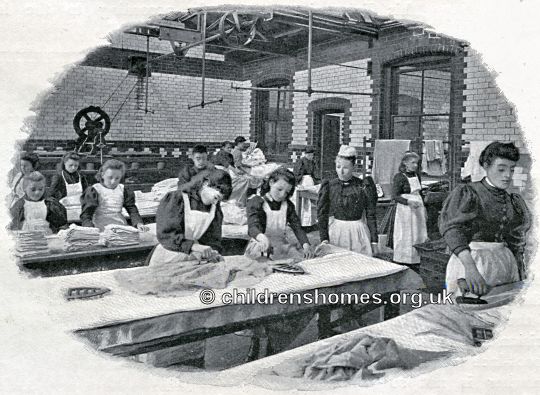
Spurgeon's Orphan Homes, Stockwell, girls in the laundry. © Peter Higginbotham
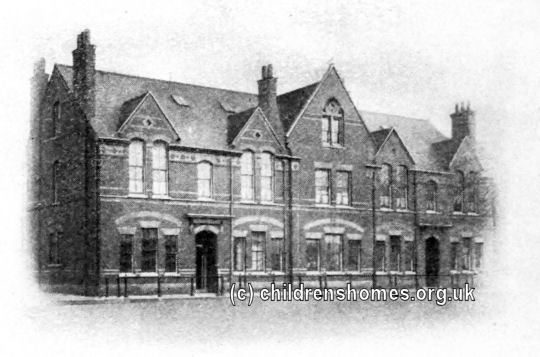
Spurgeon's Orphan Homes infirmary. © Peter Higginbotham
The home's band of choirboys and hand-bell ringers regularly gave performances over a large area and the collections among the congregations made a useful addition to the institution's income.
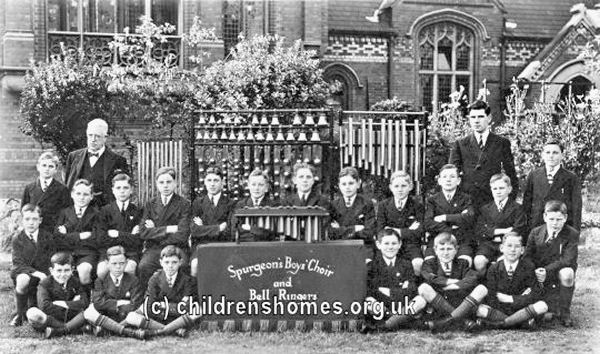
Spurgeon's boys' choir and bell-ringers, date unknown. © Peter Higginbotham
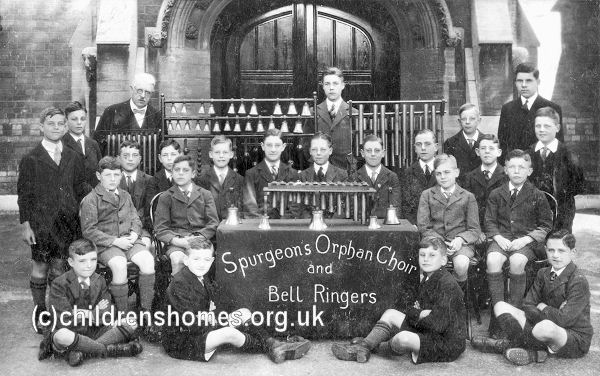
Spurgeon's boys' choir and bell-ringers, date unknown. © Peter Higginbotham
Children were required to be between the ages of 4 and 11 at the time of their entry to the home. "Unhealthy, deformed, imbecile and illegitimate" children were ineligible for admission and inmates were dismissed if a surviving parent remarried.
In 1939, at the onset of the Second World War, the children were moved to St David's, a large house and grounds on Wray Park Road in Reigate, Surrey.
A further move came in 1951 when the Homes transferred to new purpose-built premises on Park Road at Birchington, Kent. The children's houses were arranged in a distinctive zig-zag layout.
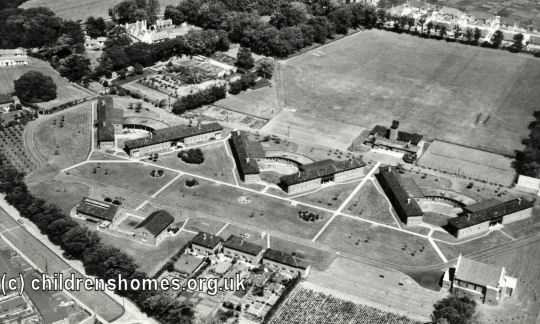
Spurgeon's Orphan Homes, Birchington. © Peter Higginbotham
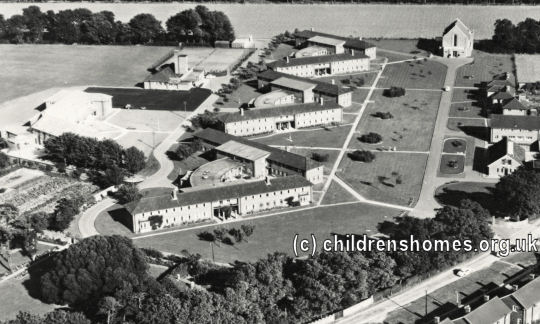
Spurgeon's Orphan Homes, Birchington. © Peter Higginbotham
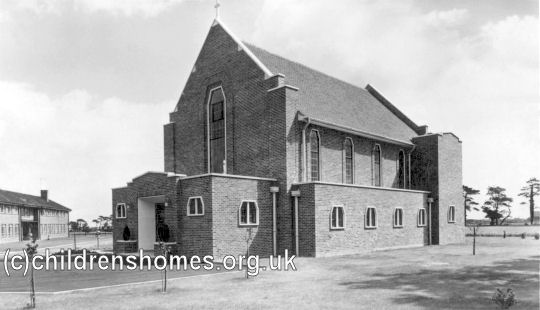
Spurgeon's Orphan Homes chapel, Birchington.
The Birchington home was closed in around 1979. The charity founded by Charles Spurgeon, now known simply as Spurgeons, continues to provide a wide variety of support for disadvantaged young people and their families. It also runs a number of visitor centres at prisons for anyone visiting a prisoner, including those with children.
The former orphanage buildings at Stockwell no longer survive and Stockwell Park High School now occupies the site. The Reigate premises are now used by the Surrey Fire and Rescue Service, while the Birchington houses have now been adapted for private residential use.
Records
Note: many repositories impose a closure period of up to 100 years for records identifying individuals. Before travelling a long distance, always check that the records you want to consult will be available.
- Spurgeons, 74 Wellingborough Road, Rushden, Northants NN10 9TY. Spurgeon's can provide copies of their records to former inmates or to their relatives. A fee is chargeable for an initial search. Other material available includes a DVD of cine-footage of the Homes from the 1930s to the 1970s. For further details see the Spurgeons website.
Census
Bibliography
- Conwell, Russell Herman The Life of Charles Haddon Spurgeon, the World's Great Preacher (1892, Edgewood)
- Higginbotham, Peter Children's Homes: A History of Institutional Care for Britain's Young (2017, Pen & Sword)
- Northrop, Henry Davenport The Life and Works of Rev. Charles H. Spurgeon (1892, Forshee & McMakin)
- Ray, Charles The Life of Charles Haddon Spurgeon (1903, Isbister)
- Spurgeon, Charles Haddon and Spurgeon, Susannah Thompson The Autobiography of Charles H Spurgeon (4 volumes 1898-1900, Revell)
Links
- The Spurgeons website
- The Spurgeon Archive — the sermons and other writings of Charles Spurgeon.
Except where indicated, this page () © Peter Higginbotham. Contents may not be reproduced without permission.


